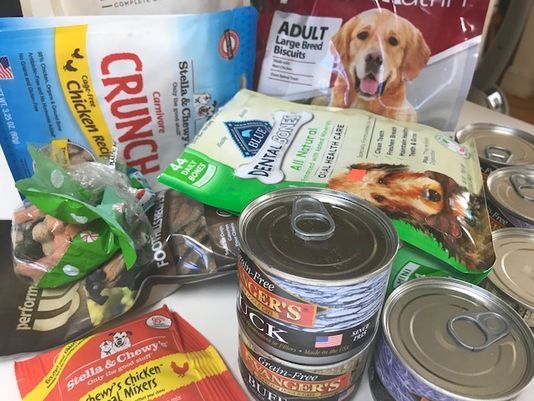

Every three or four weeks, I take my coonhound, Charly, to her groomer, Antonio. He cleans her ears, brushes her teeth, shampoos her hair, clips her nails and, for the grand finale, ties a chic bandanna around her neck.
All Charly needs is some oversized sunglasses and she’d look just like Audrey Hepburn in “Breakfast at Tiffany’s.”
While all of this is going on, I am usually three doors away at the pet store, sorting through kibble options and picking up all sorts of food (dry and wet), treats (green and brown) and cool cans of meats that I wish they made for humans.
Duck! Rabbit! Buffalo!
I’ve never spent less than $80 at the pet store, and that’s in addition to what I spend at the grocery store, since Charly’s main meal of the day usually consists of chicken that I cook for her, occasionally mixed with brown rice, peas and carrots.
Last year, in the days after I adopted her, Charly tried to run away from me at every opportunity.
This year, she knows better.
Nagging diet questions
I’m kidding about that last one. (A 20-room villa would be fine.) But I do worry about her diet and her continued good health.
Saving a few bucks wouldn’t hurt. But, let’s look at the other stuff first.
I feed Charly the same diet I fed her predecessor, Jasper, and I was chastised endlessly for that.
“Never give dogs human food,” I was told.
But I gave it to her, anyway, and she lived to be 18. No small feat for a dog with small feet.
If you go online and search out suggestions for what your dog should be eating, you will find lots of conflicting information. The Big Thing of the moment, though, is raw.
Is uncooked meat really OK for dogs?
Raw beef, raw chicken and other raw meats are, according to some experts, a mitzvah for your mutts — as opposed to some of the more popular packaged foods that are full of unnecessary carbohydrates and processed junk. (It’s believed that the uptick in pets getting so many diseases we associate with humans is because they’re eating the same junk that we are.)
Admittedly, it’s difficult these days to think of raw meat as a smart option. But doggie stomachs (like cat stomachs) are a lot different than ours are.
Going raw is up to you, though. Google “healthy dog diets,” read what the experts have to say and decide for yourself.
As for the costs of all these foods and treats: There is plenty of good advice to be had at pets.costhelper.com.
On the matter of raw vs. cooked, Christine Peterson, manager of the Pet Valu store on Valley Brook Avenue in Lyndhurst, notes that there are plenty of healthy raw options out there.
“These are specifically raw ingredients,” she said, “including vegetables and grains that are minimally processed and cold-pasteurized. It’s like pasteurizing milk, except that cold is used instead of high heat. It kills salmonella, but preserves the natural nutrients.”
Buying in bulk
Peterson says that buying large bags of food rather than smaller ones can save you money, but suggests not getting them unless you can divide the bag into small, airtight containers. Otherwise, she said, the food can become stale and lose nutrients.
As for ingredients to look for: “Read the first five ingredients and make sure the food doesn’t include byproducts and doesn’t contain corn or soy,” she advised. “Grain-free is a good guideline, and make sure the first ingredient is meat. But, the more protein, the better.”
(This goes double, for cats, Peterson added, noting: “Cats are great with raw protein. They are obligate carnivores. Rice and other carbs can make them sick.”)
Some dogs who seem to have lost their taste for kibble are often just bored with their diets. Some like raw carrots and raw green beans. Many appreciate yogurt, sardines and coconut oil, which are also good for them.
Do-it-yourself dehydrating
As for treats, Peterson sells lots of them, from cheaper ones to packages that sell for $30 and up. “And these,” she said, “run the gamut from biscuits to soft chewy treats and dehydrated foods.”
Pet owners with dehydrators at home can make their own relatively inexpensive treats, dehydrating meats and other foods that their pets already enjoy. (Just control your urge to add salt.)
“I have one customer who makes sweet potatoes,” Peterson said. “He dehydrates them and has treats for a month. The only cost is the potatoes.”
Cooked sweet potatoes, mixed in with your dog’s regular food, may also be a big hit. They’re healthy, filling and can stretch your pet food budget.